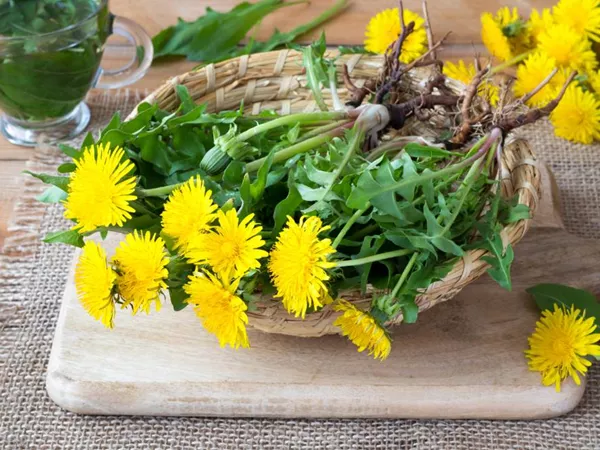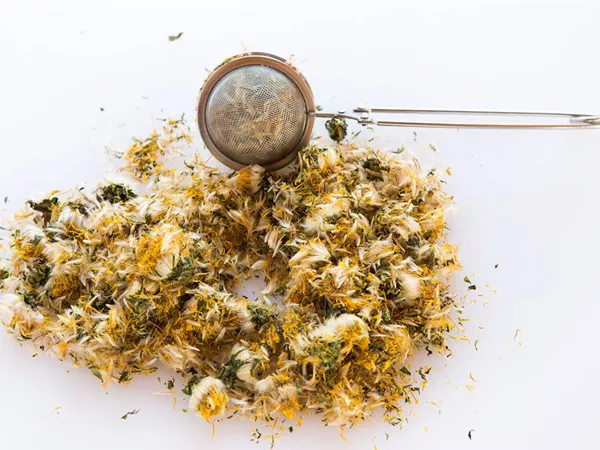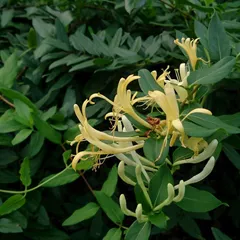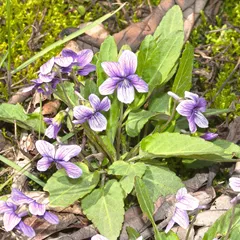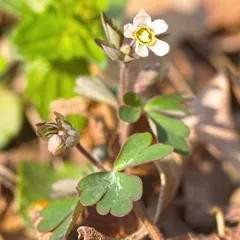Pu Gong Ying
Pu Gong Ying
English: Dandelions
Chinese: 蒲公英
Parts used: The whole plant, dried
TCM category: Herbs that clear Heat and relieve Toxicity
TCM nature: Cold
Scientific name: Taraxacum monolicium or Taraxacum sinicum
Other names: Piss-a-bed, Lion's tooth, Blowball, Cankerwort, Doon-head-clock, Witch's gowan, Milk witch, Yellow-gowan, Irish daisy, Monks-head, Priest's-crown, Puff-ball, Faceclock, Pee-a-bed, Wet-a-bed, Swine's snout, White endive, Wild endive.
Use of Pu Gong Ying (dandelions) in TCM
Please note that you should never self-prescribe TCM ingredients. A TCM ingredient is almost never eaten on its own but as part of a formula containing several ingredients that act together. Please consult a professional TCM practitioner, they will be best able to guide you.
Preparation: Remove impurities, wash, cut, and dry.
Dosage: 10 to 15g
Main actions according to TCM*: Expels Heat and Fire toxicity. Dispels Damp-Heat in the Lower Burner. Increases lactation. Treats all kinds of inflammations.
Primary conditions or symptoms for which Pu Gong Ying may be prescribed by TCM doctors*: Clogged milk ducts Mastitis Lymphadenitis Uveitis Sore throat Lung abscess Appendicitis Jaundice Strangury Cirrhosis Hepatitis Boils Carbuncles
Contraindications*: Excessive doses can cause diarrhea. Not to be used if one has a Yang deficiency or a weak Spleen.
Common TCM formulas in which Pu Gong Ying is used*
Wu Wei Xiao Du Yin
Source date: 1742 AD
Number of ingredients: 5 herbs
Formula key actions: Clears Heat. Resolves Toxicity. Cools the Blood. Reduces swelling.
Conditions targeted*: Multiple furunclesCarbuncles and others
Pu Gong Ying is a deputy ingredient in Wu Wei Xiao Du Yin. This means it helps the king ingredient(s) treat the main pattern or it serves to treat a coexisting pattern.
In Wu Wei Xiao Du Yin, Pu Gong Ying resolves Toxicity, cools the Blood, reduces swellings and disperses clumps.
Key TCM concepts behind Pu Gong Ying's properties
In Traditional Chinese Medicine (TCM), Pu Gong Ying belongs to the 'Herbs that clear Heat and relieve Toxicity' category. Herbs in this category are used to clear inflammatory and infectious conditions, referred to as 'Internal Heat' in TCM. This is why most of the herbs in this category will have both antibacterial and antiviral properties. In TCM one has too much 'Internal Heat' in their body as a result of a deficiency of 'Yin' (which is Cold in nature, see our explanation on Yin and Yang) or, more commonly, an Excess of Yang (Hot in nature). Herbs that clear Heat and relieve Toxicity treat the latter while, at the same time, removing infectious toxins from the body. As such they tend to be Cold or Neutral in nature.
As suggested by its category Pu Gong Ying is Cold in nature. This means that Pu Gong Ying typically helps people who have too much 'Heat' in their body. Balance between Yin and Yang is a key health concept in TCM. Those who have too much Heat in their body are said to either have a Yang Excess (because Yang is Hot in nature) or a Yin deficiency (Yin is Cold in Nature). Depending on your condition Pu Gong Ying can help restore a harmonious balance between Yin and Yang.
Pu Gong Ying also tastes Bitter and Sweet. The so-called 'Five Phases' theory in Chinese Medicine states that the taste of TCM ingredients is a key determinant of their action in the body. Bitter ingredients like Pu Gong Ying tends to have a cleansing action on the body by clearing Heat, drying Dampness and promoting elimination via urination or bowel movements. On the other hand Sweet ingredients tend to slow down acute reactions and detoxify the body. They also have a tonic effect because they replenish Qi and Blood.
The tastes of ingredients in TCM also determine what Organs and Meridians they target. As such Pu Gong Ying is thought to target the Liver and the Stomach. In TCM the Liver is often referred as the body's "general" because it is in charge of regulating the movements of Qi and the Body Fluids. It also takes a leading role in balancing our emotions. The Stomach on the other hand is responsible for receiving and ripening ingested food and fluids. It is also tasked with descending the digested elements downwards to the Small Intestine.
Research on Pu Gong Ying
Dandelion ethanolic extract shows promise as a diuretic in humans.1
Phytotherapy with Cinarepa (consisting of dandelion root) holds promise as an alternative option in the relief of functional dyspepsia symptoms.2
Sources:
1. Clare BA, Conroy RS, Spelman K. (2009). The diuretic effect in human subjects of an extract of Taraxacum officinale folium over a single day. J Altern Complement Med. , 15(8):929-34. doi: 10.1089/acm.2008.0152.
2. Sannia A. (2010). Phytotherapy with a mixture of dry extracts with hepato-protective effects containing artichoke leaves in the management of functional dyspepsia symptoms. Minerva Gastroenterol Dietol. , 56(2):93-9.
Use of Pu Gong Ying as food
Pu Gong Ying is also eaten as food. It is used as an ingredient in dishes such as Dandelion dumplings, Dandelion salad or Dandelion porridge.

